We-are-all-paranoid - Microbe Nerd Alert

More Posts from We-are-all-paranoid and Others





just learned that humans might have evolved smaller pupils and irises/more whites of our eyes so that it's easier for other humans to tell where we're looking as a way of communicating sudden threats. and now i'm thinking of every time i have been frantically giving my friend a Look to get out of an uncomfortable situation (or been on the receiving end). still using it to communicate sudden threats only this time his name is kyle







Journey to the Microcosmos- Flatworms: Simple Wiggly Tubes
Images Originally Captured by Jam’s Germs
Quote Voiced by Jam’s Germs

Dear scientists,
Please, for the love of God, please, make your papers more understandable.
Fuck you
Sincerely,
A college student on the verge of tears
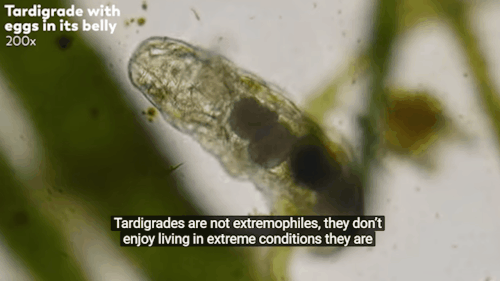
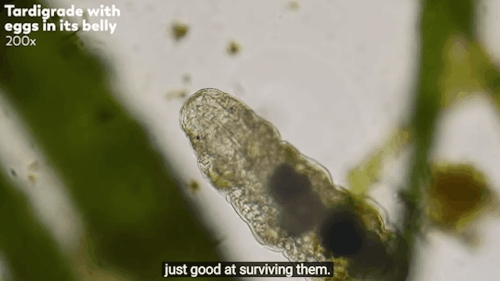
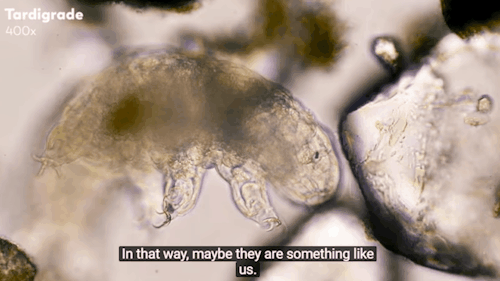
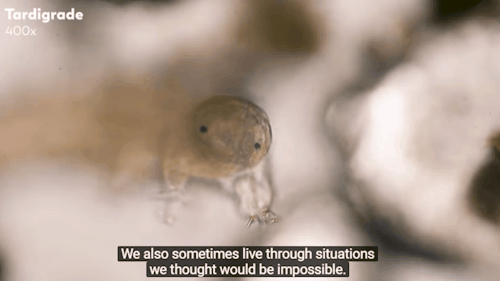
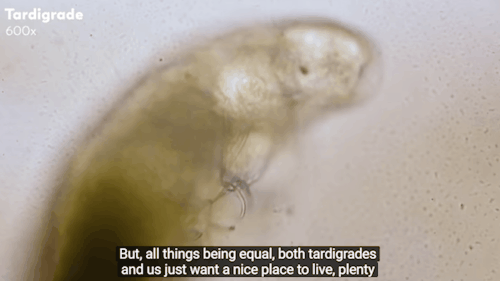
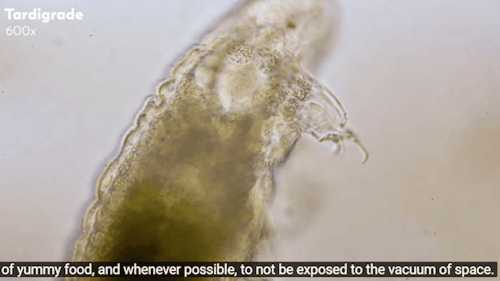
Journey to the Microcosmos: Tardigrades: Chubby, Misunderstood, & Not Immortal
Images originally captured by Jam’s Germs
Thank you @airyearthgirl for inspiring me to gif these amazing lines
most unstable girl you know: i need to get a masters degree
How SARS-CoV-2 Hijacks Human Cells to Evade Immune System

Researchers at University of California San Diego School of Medicine have discovered one way in which SARS-CoV-2, the coronavirus that causes COVID-19, hijacks human cell machinery to blunt the immune response, allowing it to establish infection, replicate and cause disease.
In short, the virus’ genome gets tagged with a special marker by a human enzyme that tells the immune system to stand down, while at the same time ramping up production of the surface proteins that SARS-CoV-2 uses as a “doorknob” to enter cells.
The study, published April 22, 2021 in Cell Reports, helps lay the groundwork for new anti-viral immunotherapies — treatments that work by boosting a patient’s immune system, rather than directly killing the virus.
“It’s very smart of this virus to use host machinery to simultaneously go into stealth mode and get inside more cells,” said Tariq Rana, PhD, professor and chief of the Division of Genetics in the Department of Pediatrics at UC San Diego School of Medicine and Moores Cancer Center. “The more we know about how the virus establishes itself in the body, the better equipped we are to disrupt it.”
In human cells, genes (DNA) are transcribed into RNA, which is then translated into proteins, the molecules that make up the majority of cells. But it’s not always so straightforward. Cells can chemically modify RNA to influence protein production. One of these modifications is the addition of methyl groups to adenosine, one of the building blocks that make up RNA. Known as N6-methyladenosine (m6A), this modification is common in humans and other organisms, including viruses.
In contrast to humans, the entire genomes of some viruses, including SARS-CoV-2, are made up of RNA instead of DNA. And rather than carry around the machinery to translate that into proteins, the coronavirus gets human cells to do the work.
Rana and his team previously discovered that m6A plays an important role in HIV and Zika virus infections. In their latest study, the researchers discovered that the human enzyme METTL3 adds methyl groups to introduce m6A in SARS-CoV-2’s RNA. That modification prevents the virus’ RNA from triggering inflammatory molecules known as cytokines. To the team’s surprise, METTL3’s activity also led to increased expression of pro-viral genes — those that encode proteins needed for SARS-CoV-2 replication and survival, such as ACE2, the cell surface receptor that the virus uses to enter human cells.
“It remains to be seen why our cells help the virus out like this,” Rana said.
“How SARS-CoV-2 Hijacks Human Cells to Evade Immune System“
-
 monkeymeatpuppet liked this · 2 weeks ago
monkeymeatpuppet liked this · 2 weeks ago -
 kage1983 liked this · 3 weeks ago
kage1983 liked this · 3 weeks ago -
 i01-xcl liked this · 1 month ago
i01-xcl liked this · 1 month ago -
 leafyleaf657 liked this · 1 month ago
leafyleaf657 liked this · 1 month ago -
 nystiaa liked this · 1 month ago
nystiaa liked this · 1 month ago -
 redcandieddust reblogged this · 1 month ago
redcandieddust reblogged this · 1 month ago -
 redcandieddust liked this · 1 month ago
redcandieddust liked this · 1 month ago -
 zzcrypticcoyotezz liked this · 2 months ago
zzcrypticcoyotezz liked this · 2 months ago -
 lilguycoded liked this · 2 months ago
lilguycoded liked this · 2 months ago -
 bonziandhisbuddy reblogged this · 2 months ago
bonziandhisbuddy reblogged this · 2 months ago -
 st4rshiptr00per liked this · 2 months ago
st4rshiptr00per liked this · 2 months ago -
 one-in-a-maxi-million reblogged this · 2 months ago
one-in-a-maxi-million reblogged this · 2 months ago -
 nightking64 liked this · 3 months ago
nightking64 liked this · 3 months ago -
 snoopbii liked this · 4 months ago
snoopbii liked this · 4 months ago -
 brewbuglurks reblogged this · 4 months ago
brewbuglurks reblogged this · 4 months ago -
 yourlocalhumanoid liked this · 4 months ago
yourlocalhumanoid liked this · 4 months ago -
 falseandrealultravival liked this · 5 months ago
falseandrealultravival liked this · 5 months ago -
 annarxbqe liked this · 5 months ago
annarxbqe liked this · 5 months ago -
 klepazia liked this · 6 months ago
klepazia liked this · 6 months ago -
 litoleman liked this · 6 months ago
litoleman liked this · 6 months ago -
 drakonialmusings reblogged this · 8 months ago
drakonialmusings reblogged this · 8 months ago -
 crocuta1 liked this · 8 months ago
crocuta1 liked this · 8 months ago -
 matthewonart reblogged this · 8 months ago
matthewonart reblogged this · 8 months ago -
 sbsivisvbaobivuf679 liked this · 9 months ago
sbsivisvbaobivuf679 liked this · 9 months ago -
 mairen-marionette liked this · 10 months ago
mairen-marionette liked this · 10 months ago -
 aronerd reblogged this · 11 months ago
aronerd reblogged this · 11 months ago -
 aronerd liked this · 11 months ago
aronerd liked this · 11 months ago -
 gamelpar reblogged this · 11 months ago
gamelpar reblogged this · 11 months ago -
 disgruntledkittycat liked this · 1 year ago
disgruntledkittycat liked this · 1 year ago -
 holy-leaves reblogged this · 1 year ago
holy-leaves reblogged this · 1 year ago -
 wyguyyyy liked this · 1 year ago
wyguyyyy liked this · 1 year ago -
 content-gremlin liked this · 1 year ago
content-gremlin liked this · 1 year ago -
 brexitcompleted liked this · 1 year ago
brexitcompleted liked this · 1 year ago -
 agent-of-sam liked this · 1 year ago
agent-of-sam liked this · 1 year ago -
 missimbalance reblogged this · 1 year ago
missimbalance reblogged this · 1 year ago -
 missimbalance liked this · 1 year ago
missimbalance liked this · 1 year ago -
 infinitesimal-souls reblogged this · 1 year ago
infinitesimal-souls reblogged this · 1 year ago -
 seraphf0x liked this · 1 year ago
seraphf0x liked this · 1 year ago -
 toxicwrench liked this · 1 year ago
toxicwrench liked this · 1 year ago -
 chellings reblogged this · 1 year ago
chellings reblogged this · 1 year ago -
 a-little-bit-of-panic liked this · 1 year ago
a-little-bit-of-panic liked this · 1 year ago -
 newspringhope reblogged this · 1 year ago
newspringhope reblogged this · 1 year ago -
 happy-bookworm liked this · 1 year ago
happy-bookworm liked this · 1 year ago -
 halfmoon-horse liked this · 1 year ago
halfmoon-horse liked this · 1 year ago -
 horror-vampire reblogged this · 1 year ago
horror-vampire reblogged this · 1 year ago -
 sweetgladiatorfesival liked this · 1 year ago
sweetgladiatorfesival liked this · 1 year ago -
 skeletonwhale reblogged this · 1 year ago
skeletonwhale reblogged this · 1 year ago

